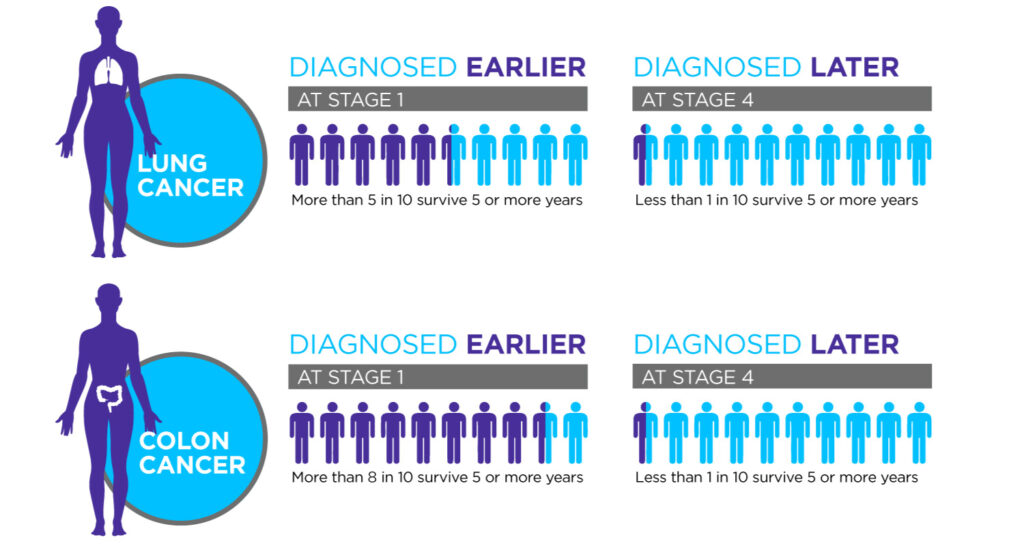
Our Mission
Our goal is to save 100,000 lives and $1.5B in healthcare costs

Cancer killed close to 10 million people in 20201. It is a stark reality that 1 in 2 of us will get cancer. From our parents to our partners, our children, our grandchildren – 1 in 2 will get cancer. We must find better ways to treat cancer, but more importantly better ways to detect cancer earlier, when chances of a cure are dramatically higher.
Lung cancer is the leading cause of the most cancer related deaths with an estimated 2.21 million cases and 1.80 million deaths in 20201. The annual treatment costs of lung cancer are $12.1 billion with an additional cost in the US of $36.1 billion due to lost productivity. Less than one in four lung cancer cases are diagnosed at early stages.
Colorectal cancer is the second most common cause of cancer related deaths, with 935,000 deaths in 2020. With current screening programmes only one in ten patients with colon cancer are diagnosed at an early stage.
Early detection is our greatest opportunity
In the war on the cancer, the battlefield is uneven. Some cancers are common but mortality is relatively low. In other cancers, survival rates are high because screening programmes and treatments are effective. The greatest problem lies with cancers which affect millions of people yet where survival rates remain very poor. The diagram below shows the change in 10 year survival rates for a range of cancers since 1971. Colon and lung cancer have a high incidence and stubbornly poor rates of 10 year survival despite 40 years of development. Today lung and colon cancer are still the world’s biggest cancer killers – it is here that we can have the greatest impact.

Early detection has the greatest potential to impact survival rates. If detected early, over half of lung cancer patients and 93 percent of colon cancer patients are expected to survive with treatments that exist today. If detected late less than five percent will survive for five years or more. Our greatest opportunity lies not in developing new drugs but increasing rates of early diagnosis through improved cancer screening.

Breath Biopsy® – chemical biomarkers in breath
Every time you breathe out there are thousands of chemicals on your breath, some of these are markers of cancer. In our labs in Cambridge we are developing a cancer breathalyzer – we are using our Breath Biopsy platform to sniff out these chemical markers to detect cancer earlier when more people will survive.
We were delighted to get the backing of the NHS and Cancer Research UK to develop our technology and run large-scale clinical trials. We’ve already tested hundreds of patients in our LuCID lung cancer trial. The faster we can run our trials and complete our research the sooner this will be a reality. There will be fewer families who lost someone because their cancer was picked up too late.
References
- World Health Organisation Cancer Fact Sheet (accessed July 2021) https://www.who.int/news-room/fact-sheets/detail/cancer
Could a Simple Breath Test Diagnose Disease? | Billy Boyle | TEDxCambridgeUniversity

